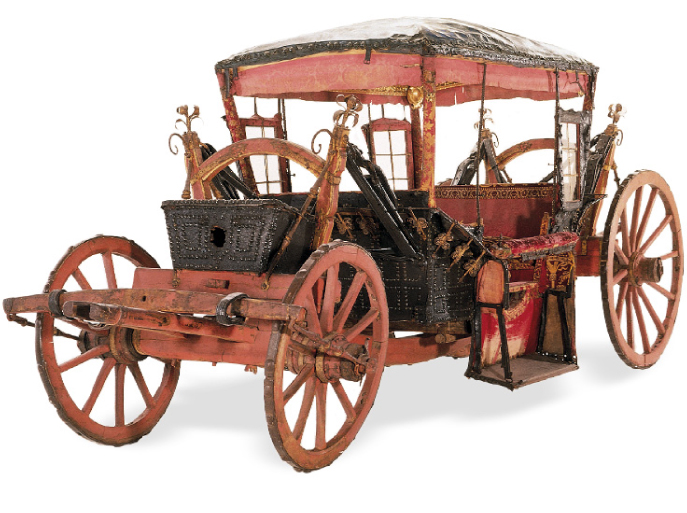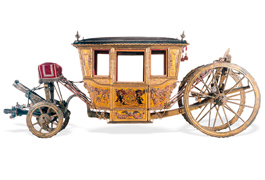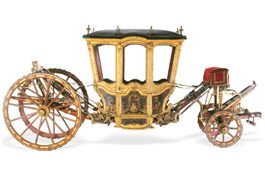A rare example of a regal Coach and the oldest in the museum's collection, this is an archaic model corresponding to the type of vehicle being used as early as in the latter part of the 16th Century. It belonged to King Filipe II (Filipe III of Spain) who used the Coach during his visit to Portugal in 1619.

Some Facts
- Century
- 16th - 17th
- Vehicle
- travel
- Work
- Spanish
- Inv
- V 0001
- Dimensions
- 572 x 185 x 241 cm
1 – Its body is open and lined in black leather with gilt tacks.
2 – The body is open and has glass panes hanging from straps. When travelling passengers were protected from the cold and rain by heavy drapery.
3 – The interior is upholstered in red embroidered velvet on a yellow background. The seat pillows hide a toilet system which was very useful in long distance journeys.
4 – The hood is upheld by four columns.
5 – Over the front wheel is a chest to store utensils. The wheel axels are connected by a single wooden shaft underneath the wheels .
6 – The front wheels, which remain too large and connected to the axels, make this coach difficult to manoeuvre.
7 – Because there was no coachman, the coach was driven by two postillions on horseback; one steering the wheeler (the pair of horses closest to the carriage) and one steering the leader (the pair of horses in the lead).





